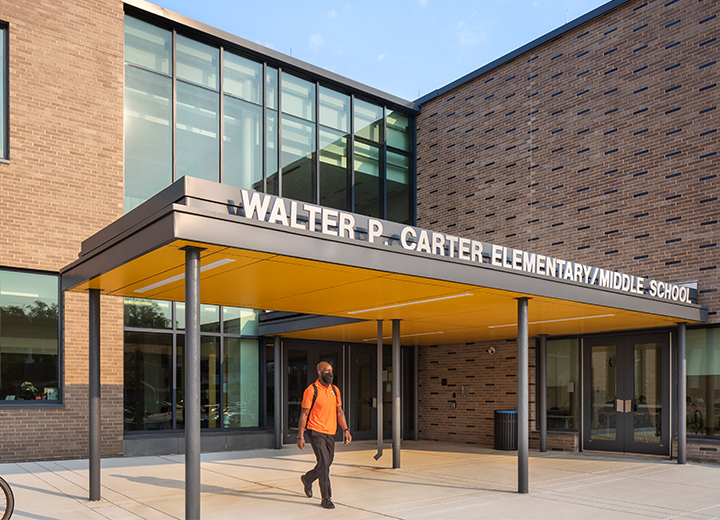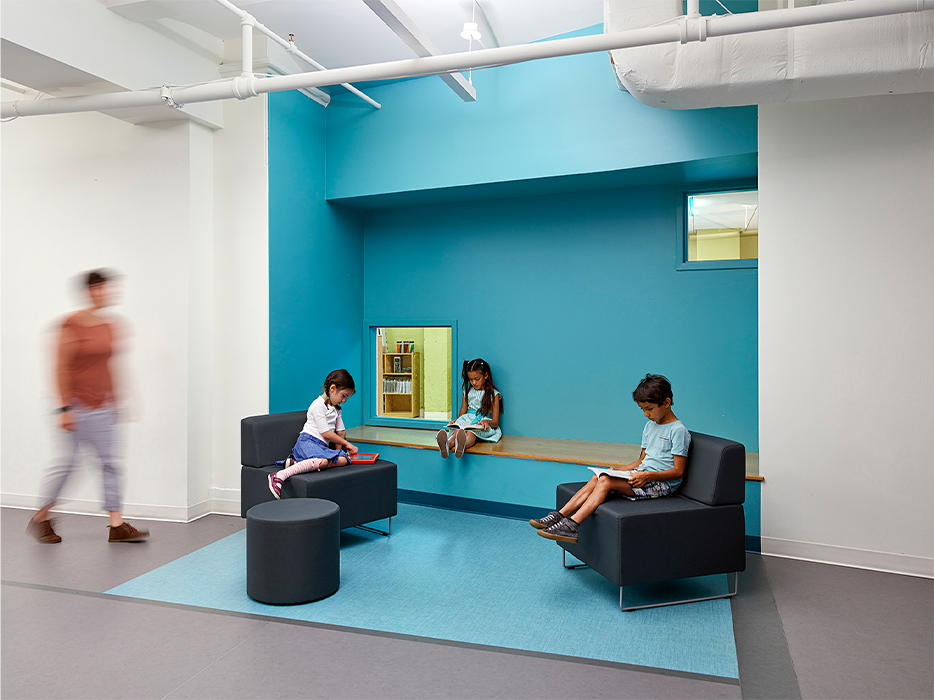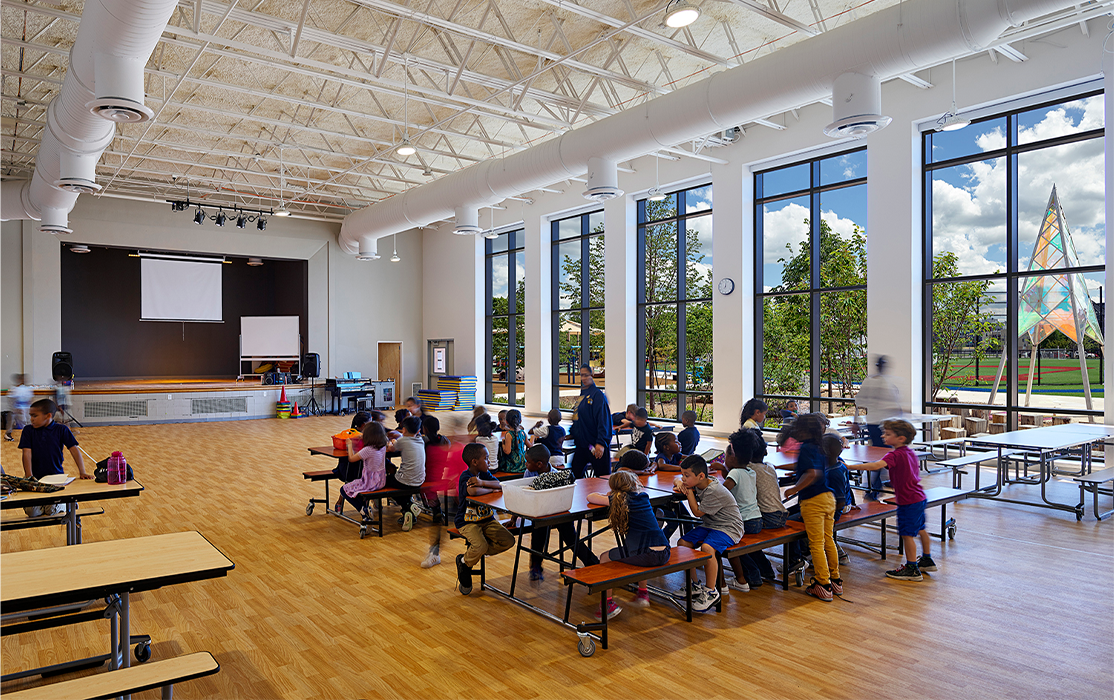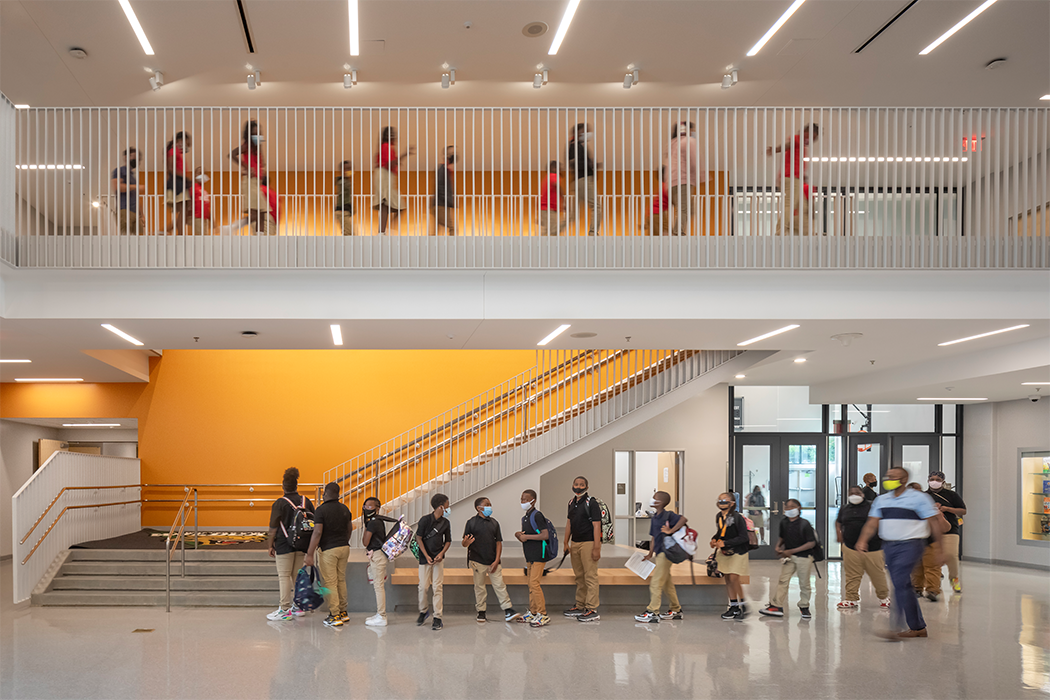Sorry, we could not find what you are looking for.
You can try again or take a look here.
Sorry, we could not find what you are looking for.
You can try again or take a look here.
Thoughts
12/1/21

School design has evolved to prioritize both physical and psychological safety and security. When we design for school safety, it’s no longer only to protect kids from physical harm, such as an active shooter or a natural disaster. We now also create spaces that help reduce the potential for feelings of estrangement, anxiety, or trauma. We design to intentionally foster welcoming, comfortable, and transparent environments necessary for children to thrive. When students’ basic needs are met, their minds are free to focus and enjoy learning rather than worrying about potential or perceived threats. Research has shown that the use of design strategies like improving sight lines and places of refuge, creating a connection to the sense of place and nature, and deinstitutionalizing spaces can increase a sense of physical safety and mental security.
Sight Lines and Places of Refuge
Clear sight lines give students a sense of control and reduces sources of anxiety. Students can see what is going on and choose to engage in the group or find a place of refuge to observe. Clear sightlines also offer natural monitoring that reduce opportunities for bullying. Places of refuge are small, visible areas located around the periphery of a larger gathering space, typically using a solid back to allow students to orient themselves without feeling exposed. Humans have an innate desire to observe their surroundings before engaging, so by creating these more intimate spaces around a larger area, students can find partial solitude and security while still engaging with peers.

Unobstructed sight lines allow teachers and staff to see what is going on throughout the school without having to physically monitor every space. This strategy can help secure both the interior and the exterior of a building through strategically placed glass and through open and closed classrooms allowing transparency without hindering privacy.
Sense of Place and Connection to Nature
Exterior views and physical interactions with nature increase students’ capacity to play, be creative, relax, and learn. These connections also increase their sense of ownership and belonging within a school. The natural world encourages risk play where students are able to explore with trial and error them while engaging their creative sides.
Community gardens are one example of a program element can support and engage students and create a sense of ownership and belonging in their current place. Students share common experiences and relate to each other through striving towards a common goal. Community gardens get students outside to experience their surroundings and gain a better understanding of their natural environment, as well as learn in real time how their actions can make an impact, similar to risk play.

We can connect students to the outdoors with large windows that frame exterior views and allow natural light to penetrate, as well as the addition of plants and other natural materials such as wood finishes and soft colors. Studies have shown this promotes self-esteem, comfort, wellness, and safety.
Deinstitutionalized Spaces
Deinstitutionalizing spaces can have major impact on students’ feelings of trust and security within their learning environments, particularly for those often disenfranchised by systemic racism. Reconsidering fundamental assumptions about how a school is run, such as introducing flexible schedules or integrating choice learning into the curriculum, can shift a school towards psychological deinstitutionalization.
Design can also support these efforts. Cohorts of clustered classrooms and staff resources can be repeated throughout the school building to deinstitutionalize spaces. This decreases the number of people that students interact with and increases casual interactions between teachers and their students to help build trust and instill comfort. It allows for passive supervision, as well as a faster staff response to situations that arise, since staff is dispersed throughout the building. The application of color theory can also help support safety and security, create a sense of place and identity, promote concentration, and encourage a range of feelings, including calm, warmth, or excitement.

Students around the world are bombarded with worries about their safety and security ranging from crippling social anxiety to an active shooter. These dangers impede on their sense of safety and security, which are vital in order for them to learn and succeed. Utilizing sight lines and places of refuge, a connection to the sense of place and nature, and deinstitutionalized spaces, we can design rich, nurturing learning environments that support students for generations to come.